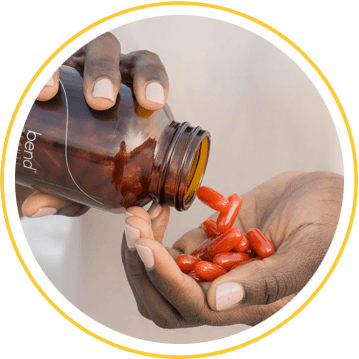
We all know that excessive sunlight exposure can contribute to advanced aging of the skin. Overexposure of ultraviolet (UV) irradiation can cause inflammation, oxidative stress, hyperpigmentation, cellular mutation and degeneration of the extracellular matrix leading to fine lines, wrinkles and even skin cancers.
This occurs through a cascade of various inflammatory skin changes and altering DNA transcription factors. In other words, overexposure to harmful UV rays from the sun can lead to changes in your skin, right down to a cellular level. And with the main exposure to UV light occurring under everyday circumstances when most of us aren’t wearing topical skin protection, it’s worth ensuring you’re protecting yourself from the inside, out. Although SPF sunscreens are an important facet of UV protection, it’s important to think about nutrition as a first-line defense against sun damage. Here are my top foods for enhancing your body’s resilience to sun damage.
Omega-3 Fatty Acids
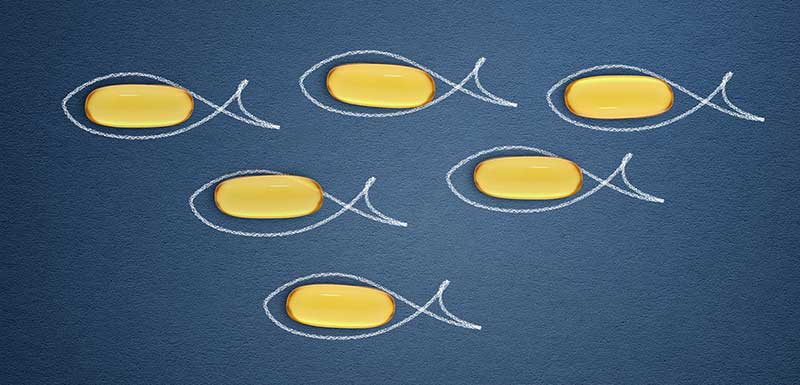
Studies consistently suggest that higher intake of omega-3 fatty acids in the diet is correlated with a decreased risk in certain types of skin cancers, such as squamous cell carcinoma and basal cell carcinoma. The most powerful omega-3 fats are EPA and DHA, abundantly found in fatty fish, blue mussels, and oysters. The omega-3 EPA is especially important to skin health and has been shown to reduce UV-induced inflammation in the skin. Consistent consumption of omega-3 fatty acids can contribute towards healthy skin cell membranes and a reduction of inflammation, thus providing first-line UV protection right at a cellular level. Several studies even suggest that adequate amounts of omega-3 fatty acids in the diet minimize the overall inflammatory appearance of a sunburn, providing a synergistic and complementary effect to other photoprotective dietary products like green tea polyphenols and lycopene.
Daily consumption of omega-3 is important for optimal skin benefits. The easiest way to do this is a high quality purified fish oil. You should target products that provide 1000-2000mg of combined EPA and DHA daily, with at least 1000mg coming from EPA alone like Bend Beauty Renew + Protect. Fish oils also need to be taken long-term in order to receive noticeable benefits.
Green Tea
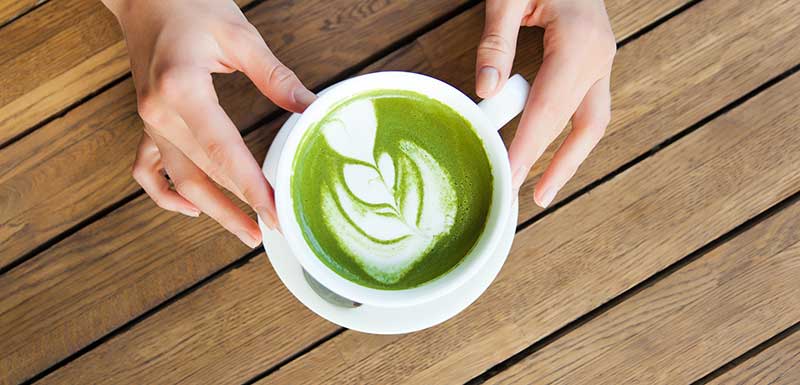
Green tea is chock full of nutritional goodies that are wonderful for your skin. Most of the research on green tea has focused on catechins which are part of a broad class of plant antioxidants called polyphenols. From a skin care perspective, green tea catechins are potent antioxidants that have been shown to provide photoprotection when taken orally, and even applied topically. They have been shown to reduce skin damage, redness and oxidative stress from excess sunlight exposure. Catechins have also been shown to reduce the occurrence of UV-induced skin tumours by influencing biochemical cascades at a cellular level, as well as reducing cellular DNA changes that can be induced through sun damage to the skin.
In a study of 60 healthy female volunteers, daily intake of just over 1400mg of green tea catechins for 12 weeks resulted in a 25% reduction in UV-induced burn. This level of green tea polyphenols roughly equates to 6-8 cups of steeped green tea, or about 6 teaspoons of matcha green tea daily. It should be noted that the level of green tea catechins in this study is quite high and may result in increased risk of side effects. A more reasonable dose of green tea catechins would be 600-800mg, coming from steeped green tea or matcha powder. It should be noted that fish oil, according to research, increases the absorption of green tea catechins.
Berries
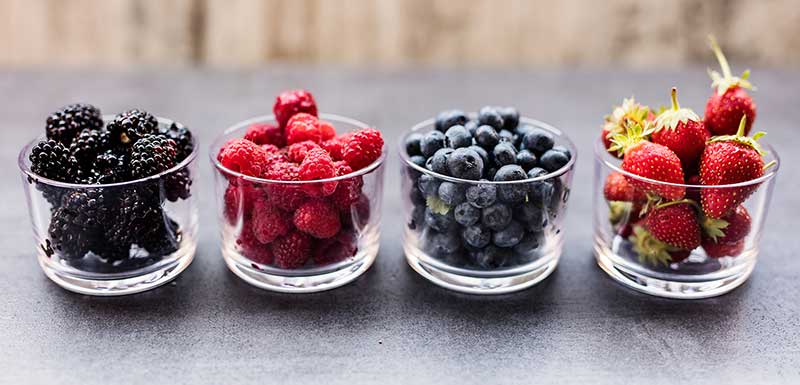
Polyphenols aren’t just found in green tea. Foods such as blueberries, raspberries, blackberries, and strawberries all contain powerful polyphenol antioxidants and should be part of a skin-focused diet. Blueberries in particular have been shown to have the ability to increase lifespan and slow age-related decline. Blueberries contain a type of polyphenol called anthocyanin which can help protect collagen from free radical damage. Lately I’ve been loving haskap berries, a new up and coming berry, packed with bright purple anthocyanins, even more than blueberries. When used on a regular basis, it can offer another layer of protection for the skin. Adding berries to your daily smoothie is a delicious way to enjoy these important skin protectors! Aim to get about one cup of berries each day.
Dark Leafy Greens
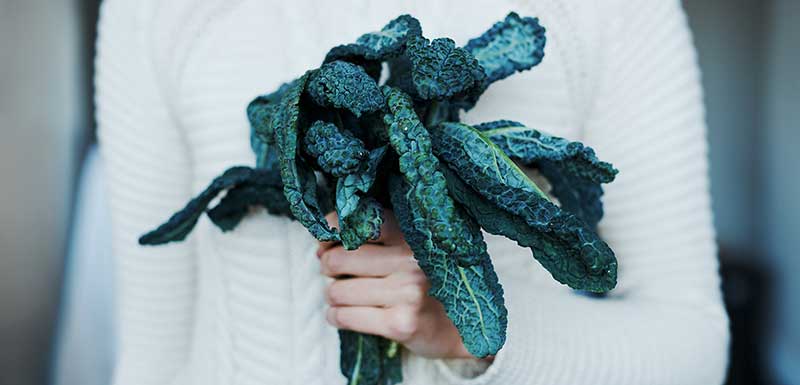
Carotenoids are the bright orange and yellow pigments abundant in leafy greens, and function to protect the plant against the harmful effects of UV irradiation. Thankfully carotenoids have been shown to offer significant protection for humans too. Specific carotenoids like lutein and zeaxanthin are excellent scavengers of reactive oxygen species (free radicals), which promote inflammation in the body. Our skin and eyes have higher concentrations of lutein and zeaxanthin than any other tissues in the body, which helps provide first-line defense against sun damage. Consumption of foods rich in lutein and zeaxanthin such as kale, spinach, collards and egg yolk have been shown to increase lutein and zeaxanthin levels in the skin and counteract sun-induced skin redness, peeling and dehydration.
One study looking at carotenoids and photoprotection showed oral supplementation with 24mg of carotenoids daily for a minimum of six weeks helped to improve UV-induced skin redness. Other studies looking at lutein and zeaxanthin specifically have shown photoprotective activity at doses of 10mg of lutein and 0.6mg zeaxanthin daily after a 12-week period. Getting your daily dose of carotenoids can be relatively easy. Jjust one cup of kale has about 20-30 mg of carotenoids per serving! Because carotenoids from leafy greens are not well absorbed, I recommend that people consume them in the presence of healthy fats like olive oil.
Chocolate
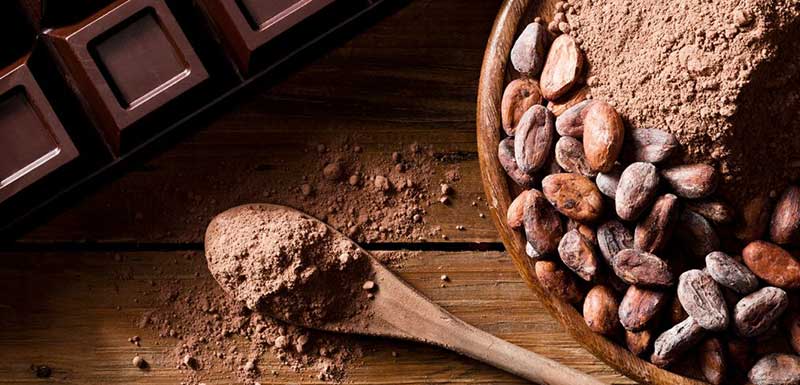
My patients always get excited when I tell them that chocolate, or more specifically cocoa, can be part of a healthy skin diet. The one caveat is that is has to be low-sugar, dark chocolate. The reason is that minimally processed cocoa is rich in flavanols, which are antioxidants shown in some studies to improve skin appearance. A few squares of dark chocolate several times per week is a nice addition to your skin diet.
Clinical Skincare
As a naturopathic doctor, I focus my practice on skin rejuvenation strategies. In addition to a healthy skin diets, I routinely use supplements to achieve optimal and consistent results. One of my go-to supplements for UV protection is Bend Beauty Renew + Protect, which is clinically proven to support skin health after UV exposure. The other must-have is matcha green tea powder. It’s easy to throw into your daily smoothie, and it makes great green tea lattes. Both work from the inside out to provide clinically proven benefits against UV.
Sometimes it’s the most simple changes that can provide the greatest benefit. Being mindful of your skin health doesn’t have to be difficult, and the best results are always achieved when you start from the inside, out.
References
Giunta B, Hou H, Zhu Y, Salemi J, Ruscin A, Shytle RD, Tan J. Fish oil enhances anti-amyloidogenic properties of green tea EGCG in Tg2576 mice. Neurosci Lett. 2010 Mar 8;471(3):134-8
Heinrich U, Moore CE, De Spirt S, Tronnier H, Stahl W. Green tea polyphenols provide photoprotection, increase microcirculation, and modulate skin properties of women. J Nutr. 2011 Jun;141(6):1202-8. doi: 10.3945/jn.110.136465. Epub 2011 Apr 27. PubMed PMID: 21525260.
Lou, Y.-R., Peng, Q.-Y., Li, T., Medvecky, C. M., Lin, Y., Shih, W. J., … Lu, Y.-P. (2011). Effects of high-fat diets rich in either omega-3 or omega-6 fatty acids on UVB-induced skin carcinogenesis in SKH-1 mice. Carcinogenesis, 32(7), 1078–1084. http://doi.org/10.1093/carcin/bgr074
Morse NL, Reid AJ, St-Onge M. An open-label clinical trial assessing the efficacy and safety of Bend Skincare Anti-Aging Formula on minimal erythema dose in skin. Photodermatol Photoimmunol Photomed. 2017 Sep 8. doi: 10.1111/phpp.12350.
Roberts RL, Green J, Lewis B. Lutein and zeaxanthin in eye and skin health. Clin Dermatol. 2009 Mar-Apr;27(2):195-201. doi: 10.1016/j.clindermatol.2008.01.011. Review. PubMed PMID: 19168000.
Rupasinghe, H. P. V., Boehm, M. M. A., Sekhon-Loodu, S., Parmar, I., Bors, B., & Jamieson, A. R. (2015). Anti-Inflammatory Activity of Haskap Cultivars is Polyphenols-Dependent. Biomolecules, 5(2), 1079–1098. http://doi.org/10.3390/biom5021079
Pilkington SM, Watson RE, Nicolaou A, Rhodes LE. Omega-3 polyunsaturated fatty acids: photoprotective macronutrients. Exp Dermatol. 2011 Jul;20(7):537-43. doi: 10.1111/j.1600-0625.2011.01294.x. Epub 2011 May 16. Review. PubMed PMID: 21569104.
Sies H, Stahl W. Nutritional protection against skin damage from sunlight. Annu Rev Nutr. 2004;24:173-200. Review. PubMed PMID: 15189118.
Wilson, M. A., Shukitt-Hale, B., Kalt, W., Ingram, D. K., Joseph, J. A., & Wolkow, C. A. (2006). Blueberry polyphenols increase lifespan and thermotolerance in Caenorhabditis elegans. Aging Cell, 5(1), 59–68. http://doi.org/10.1111/j.1474-9726.2006.00192.x
Yoon HS, Kim JR, Park GY, Kim JE, Lee DH, Lee KW, Chung JH. Cocoa Flavanol Supplementation Influences Skin Conditions of Photo-Aged Women: A 24-Week Double-Blind, Randomized, Controlled Trial. J Nutr. 2016 Jan;146(1):46-50. doi: 10.3945/jn.115.217711. Epub 2015 Nov 18.

